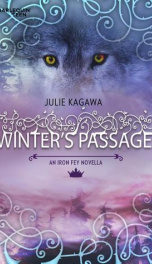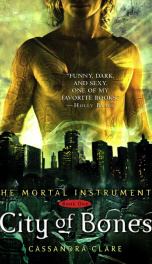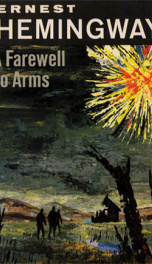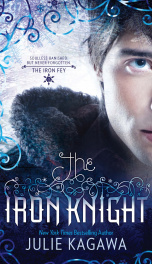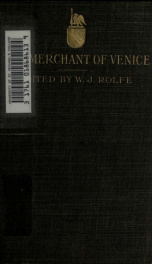Poe, Edgar Allan

Edgar Allen Poe (1809-1849) was born in Boston, Massachusetts, to parents who were itinerant actors. His father David Poe Jr. died probably in 1810. Elizabeth Hopkins Poe died in 1811, leaving three children. Edgar was taken into the home of a Richmond merchant John Allan. The remaining children were cared for by others. Poe's brother William died young and sister Rosalie become later insane. At the age of five Poe could recite passages of English poetry. Later one of his teachers in Richmond said: "While the other boys wrote mere mechanical verses, Poe wrote genuine poetry; the boy was a born poet."
Poe was brought up partly in England (1815-20), where he attended Manor School at Stoke Newington. Later it become the setting for his story 'William Wilson'. Never legally adopted, Poe took Allan's name for his middle name. Poe attended the University of Virginia (1826-27), but was expelled for not paying his gambling debts. This led to quarrel with Allan, who refused to pay the debts. Allan later disowned him. In 1826 Poe became engaged to Elmira Royster, but her parents broke off the engagement. During his stay at the university, Poe composed some tales, but little is known of his apprentice works. In 1827 Poe joined the U.S. Army as a common soldier under assumed name, Edgar A. Perry. He was sent to Sullivan's Island, South Carolina, which provided settings for 'The Gold Bug' (1843) and 'The Balloon Hoax' (1844). Tamerlane and Other Poems (1827), which Poe published at his own expense, sold poorly. It has become one of the rarest volumes in American literary history. In 1830 Poe entered West Point. He was dishonorably discharged next year, for intentional neglect of his duties - apparently as a result of his own determination to be released.
In 1833 Poe lived in Baltimore with his father's sister Mrs. Maria Clemm. After winning a prize of $50 for the short story 'MS Found in a Bottle,' he started career as a staff member of various magazines, among others the Southern Literary Messenger in Richmond (1835-37), Burton's Gentleman's Magazine in Philadelphia (1839-40), and Graham's Magazine (1842-43). During these years he wrote some of his best-known stories. Southern Literary Messenger he had to leave partly due to his alcoholism.
In 1836 Poe married his 13-year-old cousin Virginia Clemm. She bust a blood vessel in 1842, and remained a virtual invalid until her death from tuberculosis five years later. After the death of his wife, Poe began to lose his struggle with drinking and drugs. He had several romances, including an affair with the poet Sarah Helen Whitman, who said: "His proud reserve, his profound melancholy, his unworldliness - may we not say his unearthliness of nature - made his character one very difficult of comprehension to the casual observer." In 1849 Poe become again engaged to Elmira Royster, who was at that time Mrs. Shelton. To Virginia he addressed the famous poem 'Annabel Lee' (1849) - its subject, Poe's favorite, is the death of a beautiful woman.
Poe's first collection, Tales of the Grotesque and Arabesque, appeared in 1840. It contained one of his most famous work, 'The Fall of the House of Usher.' In the story the narrator visits the crumbling mansion of his friend, Roderick Usher, and tries to dispel Roderick's gloom. Although his twin sister, Madeline, has been placed in the family vault dead, Roderick is convinced she lives. Madeline arises in trance, and carries her brother to death. The house itself splits asunder and sinks into the tarn. The tale has inspired several film adaptations. Roger Corman's version from 1960, starring Mark Damon, Harry Ellerbe, Myrna Fahey, and Vincent Price, was the first of the director's Poe movies. The Raven (1963) collected old stars of the horror genre, Vincent Price, Peter, Lorre, and Boris Karloff. According to the director, Price and Lorre "drove Boris a little crazy" - the actor was not used to improvised dialogue. Corman filmed the picture in fifteen days, using revamped portions of his previous Poe sets.
In Narrative of Arthur Gordon Pym (1838), Poe's longest tale, the secret theme is the terror of whiteness. Poe invented tribes that live near the Antarctic Circle. The strange bestial humans are black, even down to their teeth. They have been exposed to the terrible visitations of men and white storms. These are mixed together, and they slaughter the crew of Pym's vessel. The Argentinean writer Jorge Luis Borges has assumed that Poe chose the color intuitively, or for the same reasons as in Melville explained in the chapter 'The Whiteness of the Whale' in his Moby-Dick. Later the 'lost world' idea was developed by Edgar Rice Burroughs in The Land That Time Forgot (1924) and other works.
During the early 1840s, Poe's best-selling work was curiously The Conchologist's First Book (1839). It was based on Thomas Wyatt's work, which sold poorly because of its high prize. Wyatt was Poe's friend and asked him to abridge the book and put his own name on its title page - the publisher had strongly opposed any idea of producing a cheaper edition. The Conchologist's First Book was a success. Its first edition was sold out in two months and other editions followed.
The dark poem of lost love, 'The Raven,' brought Poe national fame, when it appeared in 1845. "With me poetry has been not a purpose, but a passion; and the passions should be held in reverence: they must not - they cannot at will be excited, with an eye to the paltry compensations, or the more paltry commendations, of mankind." (from The Raven and Other Poems, preface, 1845) In a lecture in Boston the author said that the two most effective letters in the English language were o and r - this inspired the expression "nevermore" in 'The Raven', and because a parrot is unworthy of the dignity of poetry, a raven could well repeat the word at the end of each stanza. Lenore rhymed with "nevermore." The poems has inspired a number of artists. Perhaps the most renowed are Gustave Doré's (1832-1883) melancholic illustrations.
Poe suffered from bouts of depression and madness, and he attempted suicide in 1848. In September the following year he disappeared for three days after a drink at a birthday party and on his way to visit his new fiancée in Richmond. He turned up in delirious condition in Baltimore gutter and died on October 7, 1849.
Poe's work and his theory of "pure poetry" was early recognized especially in France, where he inspired Jules Verne, Charles Baudelaire (1821-1867), Paul Valéry (1871-1945) and Stéphane Mallarmé (1842-1898). "In Edgar Poe," wrote Baudelaire, "there is no tiresome snivelling; but everywhere and at all times an indefatigable enthusiasm in seeking the ideal." In America Emerson called him "the jingle man." Poe's influence is seen in many other modern writers, as in Junichiro Tanizaki's early stories and Kobo Abe's novels, or more clearly in the development of the19th century detective novel. J.L. Borges, R.L. Stevenson, and a vast general readership, have been impressed by the stories which feature Poe's detective Dupin ('The Murders in the Rue Morgue', 1841; 'The Purloined Letter,' 1845) and the morbid metaphysical speculation of 'The Facts in the Case of M. Waldermar' (1845). Thomas M. Disch has argued in his The Dreams Our Stuff Is Made Of (1998) that it was actually Poe who was the originator of the modern science fiction. One of his tales, 'Mellonta Taunta' (1840) describes a future society, an anti-Utopia, in which Poe satirizes his own times. Another tales in this vein are 'The Thousand-and-Second Tale of Sceherazade' and 'A Descent into the Maelstrom'. However, Poe was not concerned with any specific scientific concept but mostly explored different realities, one of the central concerns of science fiction ever since.
In his supernatural fiction Poe usually dealt with paranoia rooted in personal psychology, physical or mental enfeeblement, obsessions, the damnation of death, feverish fantasies, the cosmos as source of horror and inspiration, without bothering himself with such supernatural beings as ghosts, werewolves, vampires, and so on. Some of his short stories are humorous, among them 'The Devil in the Belfry,' 'The Duc de l'Omelette,' 'Bon-Bon' and 'Never Bet the Devil Your Head,' all of which employ the Devil as an ironic figure of fun. - Poe was also one of the most prolific literary journalists in American history, one whose extensive body of reviews and criticism has yet to be collected fully. James Russell Lowell (1819-91) once wrote about Poe: "Three fifths of him genius and two fifths sheer fudge."
do you like this author?
What readers are saying
What do you think? Write your own comment on this book!
write a commentWhat readers are saying
What do you think? Write your own comment on this author!
write a commentBook list

The Narrative of Arthur Gordon Pym of Nantucket
Series:
Unknown
Year:
Unknown
Raiting:
2.5/5
Show more
add to favoritesadd In favorites

The Raven / The Masque of the Red Death / The Cask of Amontillado
Series:
Unknown
Year:
Unknown
Raiting:
4/5
Show more
add to favoritesadd In favorites
Book list

The Narrative of Arthur Gordon Pym of Nantucket
Series:
Unknown
Year:
Unknown
Raiting:
2.5/5
Show more
add to favoritesadd In favorites

The Raven / The Masque of the Red Death / The Cask of Amontillado
Series:
Unknown
Year:
Unknown
Raiting:
4/5
Show more
add to favoritesadd In favorites
What readers are saying
What do you think? Write your own comment on this author!
write a commentGenre
- Literature & Fiction / Literary
- Literature & Fiction
- Literature & Fiction / Contemporary
- Literature & Fiction / Classics
- Literature & Fiction / Poetry / Anthologies
- Arts & Photography / History & Criticism / Regional / Native American
- Religion & Spirituality / Christianity / Reference / Concordances
if you like Poe, Edgar Allan try:
readers also enjoyed
What readers are saying
What do you think? Write your own comment on this author!
write a commentGenre
- Literature & Fiction / Literary
- Literature & Fiction
- Literature & Fiction / Contemporary
- Literature & Fiction / Classics
- Literature & Fiction / Poetry / Anthologies
- Arts & Photography / History & Criticism / Regional / Native American
- Religion & Spirituality / Christianity / Reference / Concordances
if you like Poe, Edgar Allan try:
readers also enjoyed
Do you want to read a book that interests you? It’s EASY!
Create an account and send a request for reading to other users on the Webpage of the book!

